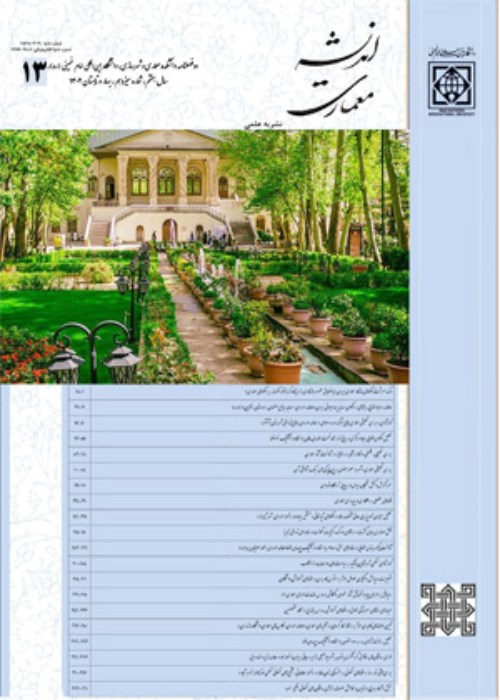Qualitative Role of Geometry in Formal Stability of the Central Courtyard of Iranian Mosques
Author(s):
Abstract:
The Agha Bozorg Mosque and School are among the most magnificent Islamic buildings in Kashan. The beautiful architecture of the garden, the great brick dome and the minarets in the court of the mosque have made it one of the most spectacular historical monuments in Kashan. This building is a combination of architectural and decorative elements, and a combination of interwoven proportions and volumes, which has rarely been investigated from the spiritual dimension of architecture, while its physical dimension has been the subject of extensive studies. The present study is an attempt to investigate the spiritual dimension of this mosque and school and study the relationship between the physical and spiritual dimension of this building. The research hypothesis (the interpretations of architecture of this building according to the Islamic beliefs and thoughts contribute to a better understanding of this building by the Muslim audience and development of a spiritual link with the building body) is proved. In order to prove this hypothesis, the concept of interpretation, the interpretational approach, perception of spaces, including the perception of Islamic architecture, which is known as a spiritual and cryptic architecture, are described according to the literature, and then the author drew on the valid arguments derived from the holy Quran, the traditions and common beliefs of Muslims as well as logical reasoning to prove the research hypothesis. The library studies and field observations are used as data collection instruments in this study. Instruments such as graphic images and charts have been used for data analysis. Finally, this paper concludes that in the interpretive approach, the referee interprets the text based on his thoughts and his mental principles and that individuals with different opinions, thoughts and mindsets may provide different judgments. as for the judgments of this building (Agha Bozorg mosque and the school of Kashan) and the similar buildings, as the audience of such buildings are mostly Muslims and have common Islamic opinions in line with recognition of God and obeying him; all such judgments are consistent with the principle of monotheism and the principle of monotheism is the principle that unifies the plurality of beliefs among Muslims. Interpretation of the architectural elements of the mosque according to these beliefs, will make the perception of this building easier for the Muslim audience, and will help them establish physical as well as spiritual and emotional associations with the building. In other words, the architecture of this building can also facilitate spiritual perceptions and mystical experiences.
Keywords:
Language:
Persian
Published:
Architectural Thought, Volume:2 Issue: 4, 2019
Pages:
53 to 62
magiran.com/p1938348
دانلود و مطالعه متن این مقاله با یکی از روشهای زیر امکان پذیر است:
اشتراک شخصی
با عضویت و پرداخت آنلاین حق اشتراک یکساله به مبلغ 1,390,000ريال میتوانید 70 عنوان مطلب دانلود کنید!
اشتراک سازمانی
به کتابخانه دانشگاه یا محل کار خود پیشنهاد کنید تا اشتراک سازمانی این پایگاه را برای دسترسی نامحدود همه کاربران به متن مطالب تهیه نمایند!
توجه!
- حق عضویت دریافتی صرف حمایت از نشریات عضو و نگهداری، تکمیل و توسعه مگیران میشود.
- پرداخت حق اشتراک و دانلود مقالات اجازه بازنشر آن در سایر رسانههای چاپی و دیجیتال را به کاربر نمیدهد.
دسترسی سراسری کاربران دانشگاه پیام نور!
اعضای هیئت علمی و دانشجویان دانشگاه پیام نور در سراسر کشور، در صورت ثبت نام با ایمیل دانشگاهی، تا پایان فروردین ماه 1403 به مقالات سایت دسترسی خواهند داشت!
In order to view content subscription is required
Personal subscription
Subscribe magiran.com for 70 € euros via PayPal and download 70 articles during a year.
Organization subscription
Please contact us to subscribe your university or library for unlimited access!


